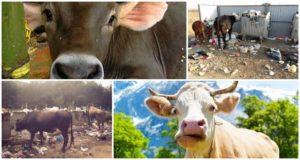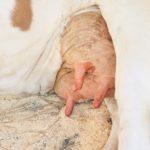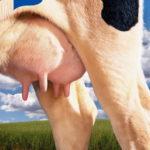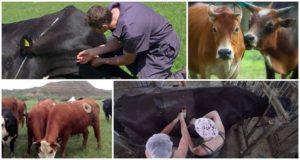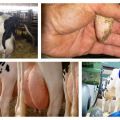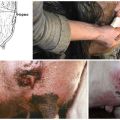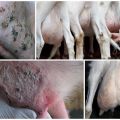Causes and symptoms of catarrhal mastitis in cows, treatment and prevention
Mastitis is a serious inflammatory disease of the udder that is common in cattle. It usually occurs in first-calf heifers and recently calved animals. There are several types of the disease, which differ in the severity of the course. Causes of catarrhal mastitis in cows, methods of diagnosis and treatment, methods of prevention, all this should be known to a person who has dairy animals on the farm.
Causes of the disease
Catarrhal mastitis is an infectious disease caused by streptococci, staphylococci, or E. coli. The reasons for the development of the disease:
- violation of conditions of detention (cold, dampness in the barn, dirt);
- violation of udder hygiene (lack of washing and massage before milking);
- milking errors;
- accidental injury to the nipple in the pasture or in the barn, penetration of infection into the milk ducts.
At the initial stages, the disease is asymptomatic, the animal does not lose appetite, has a normal temperature. Small seals on the udder (the size of a pea) can only be felt when the udder is carefully examined.
Symptoms of the problem
With catarrhal mastitis, the milk ducts first become inflamed, if the animal is not treated, the alveoli are affected, the disease progresses. Then the animal's appetite disappears, the cow becomes lethargic, the udder becomes stony, its temperature rises, lactation decreases, flakes appear in the milk, it becomes cloudy and tasteless. The deterioration of the cow's condition occurs quickly, when the first symptoms of the disease are found, treatment should be started.
Diagnostics
In order not to miss the onset of the disease, the belly, udder and hind legs of the animal should be cleaned of dirt and dust daily. To do this, the dirt is cleaned off with a stiff brush, the udder is washed with warm water, wiped dry and smeared with cream. Light massage allows you to detect small seals in the udder, and decanting the first drops of milk in a separate bowl and the appearance of flakes in them will help the owner to recognize the development of catarrhal mastitis in a cow.
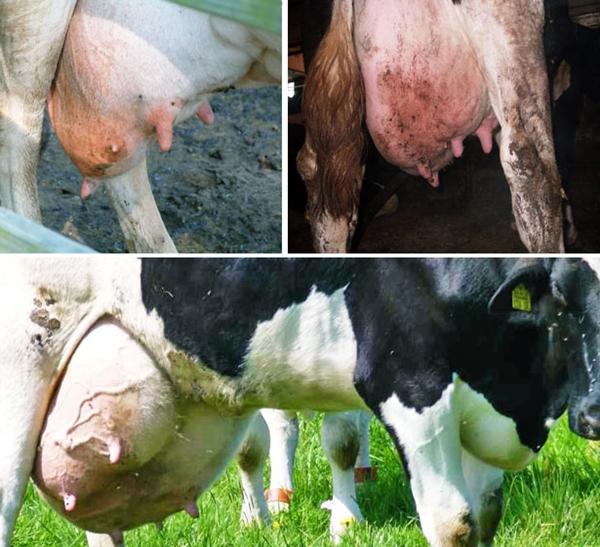
Important: the lack of treatment can provoke the development of udder gangrene, sepsis, death of the animal.
Careful and attentive attitude to the cow, observance of the rules of keeping animals allows you to quickly cope with the disease.
How to deal with catarrhal mastitis in cows
At the initial stage of the disease, the animal should be left in the stall (in summer) or transferred to a separate pen. They stop giving the animal wet food, limit drinking.
A cow should be milked only by hand; milk is milked in small portions 4-6 times a day. Before each milking, the udder is massaged.In case of difficult milking, edema and anxiety of the animal, it is recommended to use ichthyol, salicylic ointment. You can apply applications at night, securing them with a bandage. In severe cases, the veterinarian prescribes injections of antibiotics: "Streptomycin", "Monomycin" and others. The course is 5-7 days. With swelling and soreness of the udder, cooling compresses are applied to it in the first 2 days of exacerbation. After removing the edema, they are replaced with warming ones.
The stall of the animal must be dry and clean, the cow is placed on a thick straw bed. It is protected from drafts. The stall is cleaned of manure daily, disinfection is carried out every 2-3 days. In order not to miss the onset of the disease in other cows, all livestock are carefully examined. Disinfect with "Whiteness" solution, hot baking soda solution.
Prevention measures
All animals in the herd should be systematically examined by a veterinarian. The udder should be washed and massaged before each milking. It is necessary to apply special creams to it so that the skin of the organ does not coarse, remains elastic, does not crack.
The barn is kept clean, the litter is regularly changed, and manure is removed 1-2 times a day. In the presence of scratches, cracks, scuffs on the skin of the udder, the damage is treated with iodine, synthomycin ointment, and a pharmacy solution of chlorhexidine. Periodically, mastitis tests are carried out on the spot, milk is submitted for analysis to a veterinary laboratory.
Since mastitis occurs more often after calving, in first-calf heifers, preventive examinations of animals should be carried out. The lobes of the udder should be symmetrical, the skin of the nipples should be free from damage, swelling and redness.
Correct milking of first-calf heifers and good living conditions for animals can reduce the likelihood of mastitis. Timely interaction with the veterinarian, fulfilling the doctor's prescriptions in case of animal illness, ensure a quick recovery without reducing productivity.
